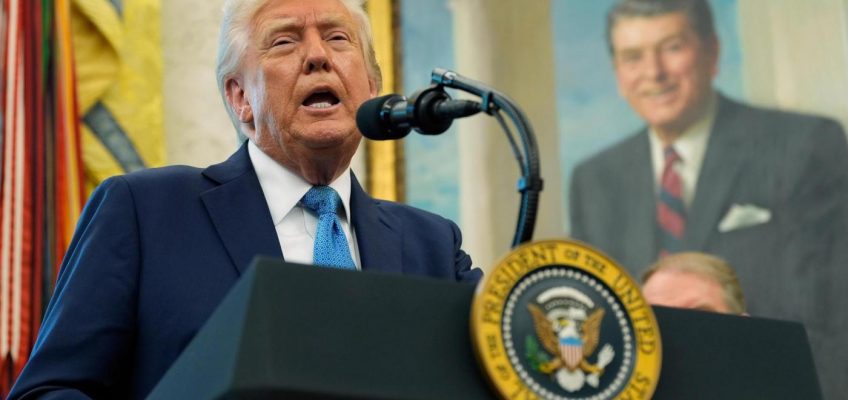By ERIC TUCKER, Associated Press
WASHINGTON (AP) — Two major law firms are expected to ask separate judges on Wednesday to permanently block President Donald Trump’s executive orders that were designed to punish them and hurt their business operations.
The firms — Perkins Coie and WilmerHale — have said the orders imposed in March are unconstitutional assaults on the legal profession that threaten their relationships with clients and retaliate against them based either on their past legal representations or their association with particular attorneys who Trump perceives as his adversaries.
Related Articles
Cory Bowman, Vice President JD Vance’s half brother, runs for Cincinnati mayor
Lawson, Mitchell: How Trump’s tariffs affect US economic freedom, and why that matters
5 Concordia University graduates win first round in DHS lawsuit
NYC mayor and Trump border czar tout charges against 27 people in Tren de Aragua case
Trump says he has ‘no intention’ of firing Federal Reserve chair
Courts last month temporarily halted enforcement of key provisions of both orders, but the firms are in court Wednesday asking for the edicts to be struck down in their entirety and for judges to issue rulings in their favor. Another firm, Jenner & Block, is expected to make similar arguments next week.
“Although Perkins Coie did not bring this suit lightly, it was compelled to do so to preserve its ability to continue representing the best interests of its clients,” lawyers for Perkins Coie wrote in a filing ahead of the hearing. “The Constitution does not permit our elected leaders, from any party, to punish lawyers by fiat for representing clients who oppose their political agendas. It would set a grave precedent for our Republic if the Order were allowed to stand.”
The executive orders taking aim at some of the country’s most elite and prominent law firms are part of a wide-ranging retribution campaign by Trump designed to reshape civil society and extract concessions from perceived adversaries. The actions have forced targeted entities, whether law firms or universities, to decide whether to push back and risk further incurring the administration’s ire or to agree to concessions in hopes of averting sanctions. Some firms have challenged the orders in court, but others have proactively reached settlements.
The orders have generally imposed the same consequences, including directing the suspension of attorney security clearances, restricting lawyers’ access to federal buildings and terminating federal contracts.
The first law firm action took place in February when Trump signed a memo suspending the security clearances of attorneys at Covington & Burling who have provided legal services to special counsel Jack Smith, who investigated the president between his first and second terms and secured two indictments that have since been abandoned.
The executive order targeting Perkins Coie singled out the firm’s representation of Democratic presidential nominee Hillary Clinton during the 2016 presidential race, and the one against WilmerHale cited the fact that special counsel Robert Mueller — who investigated Trump during his first term over potential ties between Russia and his 2016 campaign — was for years a partner at the firm.
Last month, the firm Paul Weiss cut a deal with the Trump administration that resulted in an executive order against it being rescinded.
Since then, more than a half-dozen other firms have reached agreements with the White House that require them, among other things, to dedicate free legal services to causes the Trump administration says it champions.
They include Skadden, Arps, Slate, Meagher & Flom; Milbank; Willkie, Farr & Gallagher; Kirkland & Ellis; Latham & Watkins LLP; Allen Overy Shearman Sterling US LLP; Simpson Thacher & Bartlett LLP; and Cadwalader, Taft & Wickersham.




